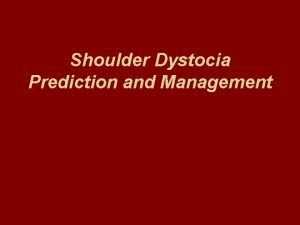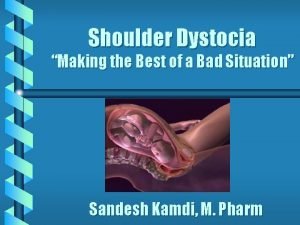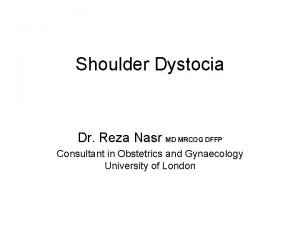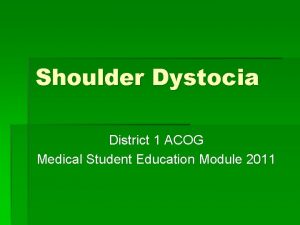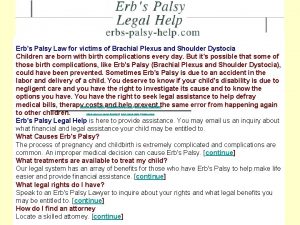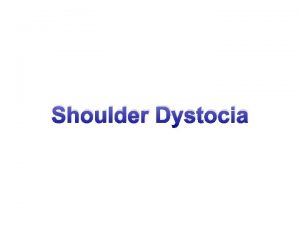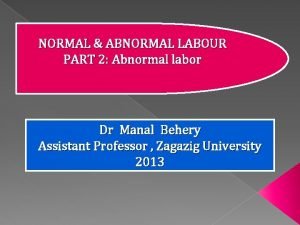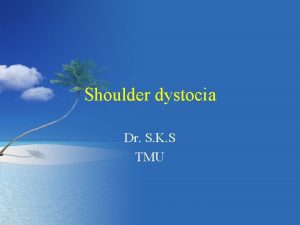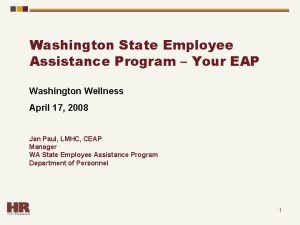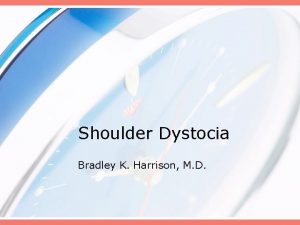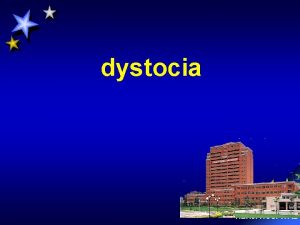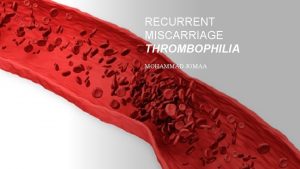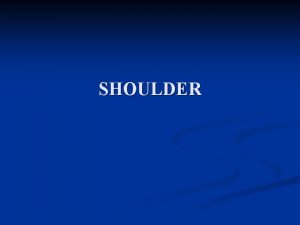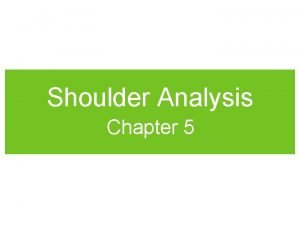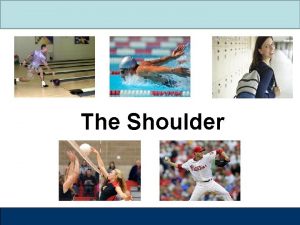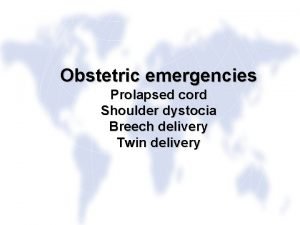Risk Factors for Recurrent Shoulder Dystocia Washington State














- Slides: 14

Risk Factors for Recurrent Shoulder Dystocia, Washington State 1987 -2004 Hillary Moore, MD University of Washington School of Public Health and Community Medicine Department of Epidemiology Maternal and Child Health Track Melissa Schiff, Thesis Advisor Susan Reed, Thesis Committee Member

Introduction • Shoulder dystocia is an obstetric emergency in which an infant’s shoulders fail to deliver spontaneously after delivery of the head June 7, 2006 Recurrent Shoulder Dystocia

Background • Can result in significant infant morbidity and mortality as well as maternal morbidity • Incidence of primary shoulder dystocia is 0. 131. 16% of vaginal deliveries • Four previous studies on recurrent shoulder dystocia – Very small number of cases – No adjustment for confounding – Referral center populations June 7, 2006 Recurrent Shoulder Dystocia

Specific Aims • What are the incidences of primary and recurrent shoulder dystocia? • What are the risk factors for recurrent shoulder dystocia? June 7, 2006 Recurrent Shoulder Dystocia

Methods • Data Source: Washington State Longitudinal Birth Records Database linked with birth hospitalization discharge diagnoses, 19872004 June 7, 2006 Recurrent Shoulder Dystocia

Methods • Calculated primary and recurrent shoulder dystocia annual incidences • Described maternal characteristics of women with and without recurrent shoulder dystocia and a subsequent cesarean section • Used logistic regression to calculate Odds Ratios (OR) and 95% Confidence Intervals (CI) for the following risk factors: – – – – Birth weight Gestational age Body Mass Index Maternal weight gain Gestational Diabetes Operative assistance Induction of labor June 7, 2006 Recurrent Shoulder Dystocia

Methods • Constructed a multivariable logistic regression model including maternal age and parity as confounding factors to obtain adjusted risk estimates for risk factors found to be significantly associated with recurrent shoulder dystocia • Analysis was performed with stratification by diabetes status June 7, 2006 Recurrent Shoulder Dystocia

Results June 7, 2006 Recurrent Shoulder Dystocia

Results (continued) Cases N=1, 060 (%) Controls N=4, 238 (%) Cesarean Section N=1, 172 (%) Maternal Age (years) <20 20 -24 25 -29 30 -34 35+ 2. 0 19. 4 33. 1 30. 3 15. 2 3. 7 23. 1 31. 1 27. 2 14. 8 1. 6 16. 1 30. 0 32. 6 19. 6 Parity 1 2 3 4 5+ 42. 5 32. 6 12. 4 4. 6 4. 9 63. 5 20. 3 8. 1 3. 0 1. 9 50. 6 28. 9 10. 1 4. 8 3. 2 June 7, 2006 Recurrent Shoulder Dystocia

Results (continued) Risk Factor OR Crude OR Adjusted (95% CI) Gestational diabetes in subsequent pregnancy Birth weight in index pregnancy (grams) <2500 -2999 3000 -3499 3500 -3999 4000 -4499 4500 -4999 5000+ June 7, 2006 1. 5 (1. 2, 2. 0) 1. 2 (0. 9, 1. 5) 0. 4 (0. 2, 0. 7) Reference 2. 0 (1. 6, 2. 4) 3. 7 (3. 0, 4. 6) 3. 8 (2. 8, 5. 2) 6. 5 (3. 4, 12. 6) 0. 4 (0. 2, 0. 7) Reference 1. 9 (1. 5, 2. 4) 3. 5 (2. 8, 4. 4) 3. 3 (2. 4, 4. 5) 4. 5 (2. 2, 9. 3) Recurrent Shoulder Dystocia

Results (continued) Risk Factor OR Crude OR Adjusted (95% CI) Operative delivery in index pregnancy Forceps Vacuum Both No operative assistance 0. 9 (0. 7, 1. 2) 1. 2 (1. 0, 1. 4) Reference 1. 1 (0. 8, 1. 4) 1. 5 (1. 3, 1. 9) Reference Induction in subsequent pregnancy 1. 2 (1. 0, 1. 4) 1. 1 (0. 9, 1. 3) June 7, 2006 Recurrent Shoulder Dystocia

Discussion • Increasing magnitude of risk with increasing birth weight in the index pregnancy • 50% increased risk of recurrence with vacuum assistance in the index pregnancy • No significant association between gestational diabetes and recurrence after adjustment for maternal age and parity • No effect modification by diabetes status • Caesarean sections after primary shoulder dystocia • Limitations June 7, 2006 Recurrent Shoulder Dystocia

Conclusion • Based on our population-based study, birth weight and vacuum assistance in the index delivery indicate increased risk of recurrence in a subsequent delivery • In the context of an increasing primary shoulder dystocia incidence, identification of risk factors for recurrent shoulder dystocia is needed for clinical decisionmaking June 7, 2006 Recurrent Shoulder Dystocia

Thank you Melissa Schiff Susan Reed Bill O’Brien Sara Donahue and my MCH colleagues Supported in part by Project #T 76 MC 00011 from the Maternal and Child Health Bureau (Title V, Social Security Act), Health Resources and Services Administration, U. S. Department of Health and Human Services. June 7, 2006 Recurrent Shoulder Dystocia
 Helper mnemonic shoulder dystocia
Helper mnemonic shoulder dystocia Mc robert maneuver
Mc robert maneuver Wood screw maneuver
Wood screw maneuver Shoulder dystocia acog
Shoulder dystocia acog Symfysiotomie
Symfysiotomie Shoulder dystocia mnemonic
Shoulder dystocia mnemonic Credit risk market risk operational risk
Credit risk market risk operational risk Uterine contractions during labour
Uterine contractions during labour Second stage of labor
Second stage of labor Dystocia
Dystocia Tmu crazy colors
Tmu crazy colors Washington state eap
Washington state eap Washington state geography
Washington state geography Shiba rainbow chart
Shiba rainbow chart Washington state rn licensure
Washington state rn licensure
